India is home to a remarkable array of wildlife, but many of its species are facing critical threats due to habitat loss, poaching, and environmental changes. In our blog titled 10 Most Endangered Wildlife Species in India, we delve into the plight of some of the country's most vulnerable creatures. From majestic predators to elusive forest dwellers, each species on this list is at a precarious crossroads, fighting for survival in a rapidly changing world.
Explore the unique challenges these species face, the dedicated conservation efforts working to protect them, and the ongoing struggles to preserve their habitats. This blog provides an in-depth look at the importance of biodiversity and the critical need for continued efforts to ensure the survival of these extraordinary animals. Dive into the fascinating world of India's endangered wildlife and discover why every species on this list deserves our attention and action.
10. Red Panda (Ailurus fulgens)
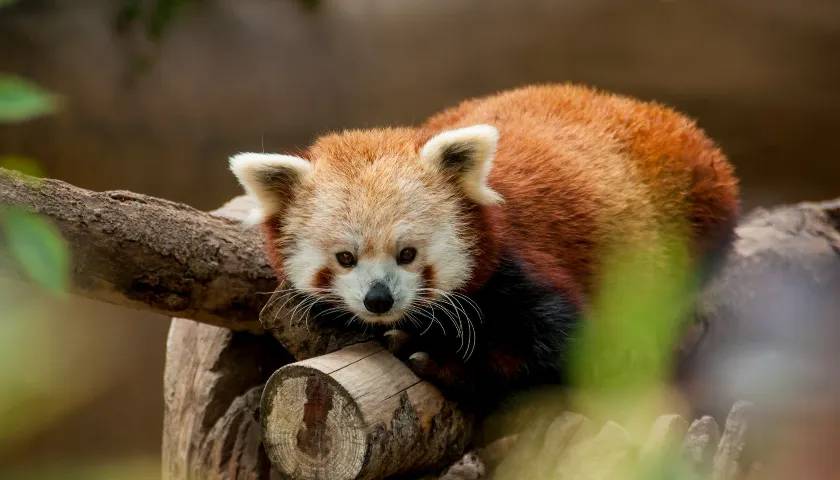
The Red Panda (Ailurus fulgens) is a small, tree-dwelling mammal native to the eastern Himalayas, including the states of Sikkim, Arunachal Pradesh, and parts of Meghalaya and West Bengal in India. Known for its striking red fur and bushy tail, the Red Panda is an arboreal animal that spends most of its time in trees. Its diet primarily consists of bamboo, but it also eats fruits, acorns, and small insects. Unfortunately, the Red Panda faces critical threats from habitat loss due to deforestation, agricultural expansion, and human encroachment. Additionally, poaching and illegal wildlife trade have significantly impacted its population.
According to the latest IUCN Red List report, published in 2021, fewer than 10,000 Red Pandas remain in the wild. Conservation efforts for the Red Panda focus on habitat protection, anti-poaching measures, and community-based conservation programs. Establishing protected areas and wildlife corridors is crucial to maintaining viable populations and ensuring genetic diversity. Awareness campaigns and education programs aim to involve local communities in conservation efforts and reduce human-wildlife conflict. The Red Panda's classification as endangered highlights the urgent need for continued and enhanced conservation strategies to secure its future in the wild.
9. Lion-tailed Macaque (Macaca silenus)
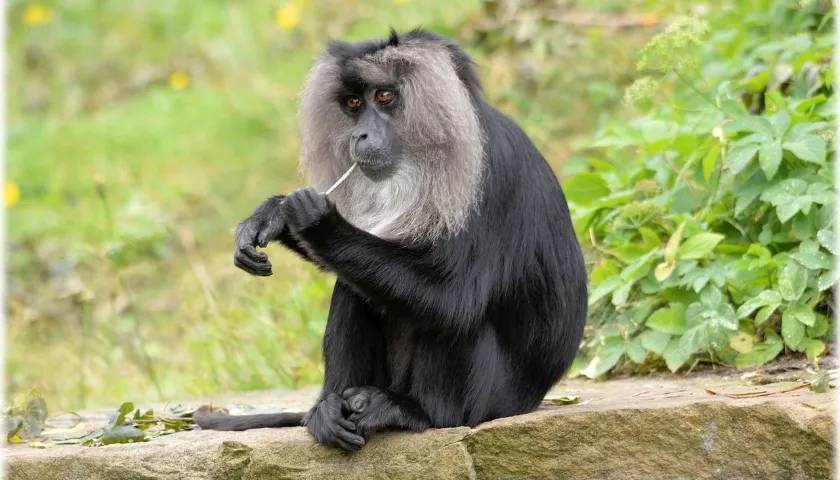
The Lion-tailed Macaque (Macaca silenus) is a striking primate endemic to the Western Ghats of India, notable for its distinctive appearance. Adorned with black fur and a silver-grey mane around its face, the Lion-tailed Macaque also boasts a tufted tail that resembles a lion’s. This species primarily inhabits the dense tropical rainforests of the Western Ghats and is highly arboreal, spending most of its life in the treetops.
Facing significant threats from habitat destruction due to logging, agricultural expansion, and human encroachment, the Lion-tailed Macaque's population has drastically declined. According to the latest IUCN Red List report, published in 2022, fewer than 4,000 individuals remain in the wild. Conservation efforts focus on protecting the macaque's forest habitat through the establishment of wildlife reserves and corridors, reducing human-wildlife conflict, and promoting sustainable land-use practices. Community engagement and education are also integral, aiming to foster coexistence between local communities and wildlife. Protecting the Lion-tailed Macaque is vital for maintaining the ecological balance of its forest habitat and ensuring the survival of this unique and charismatic species.
8. The Nilgiri Tahr (Nilgiritragus hylocrius)
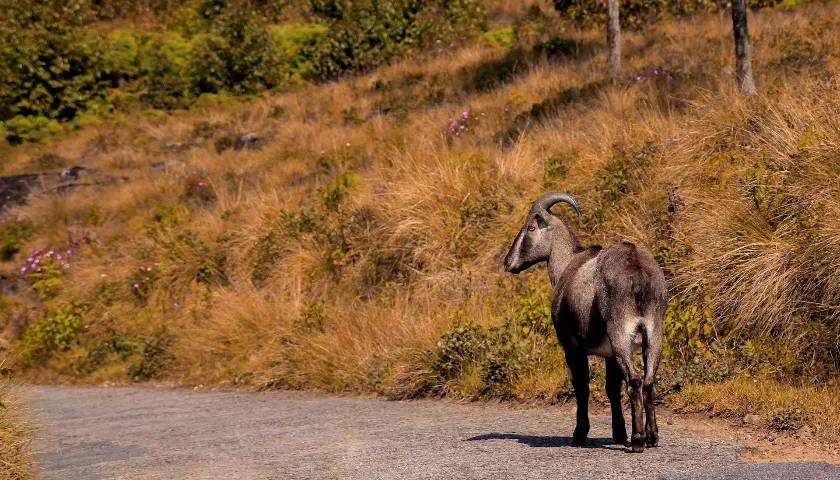
The Nilgiri Tahr (Nilgiritragus hylocrius) is a striking mountain goat endemic to the Western Ghats of southern India. Known for its rugged, reddish-brown coat and curved horns—particularly prominent in males—the Nilgiri Tahr inhabits the high-altitude grasslands and rocky slopes of the Nilgiri Hills, the Anamalai Hills, and the Silent Valley. This species faces several threats, including habitat loss due to deforestation, agricultural encroachment, and human-wildlife conflict. Additionally, overgrazing by domestic livestock has contributed to significant habitat degradation. As a result, the Nilgiri Tahr is classified as endangered on the IUCN Red List.
According to the latest report by the IUCN, published in 2022, the Nilgiri Tahr population is estimated to be around 3,000 individuals in the wild. Conservation efforts are focused on habitat protection and restoration, establishing protected areas, and managing human-wildlife interactions. Creating wildlife corridors and enforcing anti-poaching measures are also crucial for maintaining viable populations. Community involvement and education are essential to ensure the long-term survival of this unique and ecologically important species. Protecting the Nilgiri Tahr is vital for preserving the biodiversity of the Western Ghats and maintaining the ecological balance of its high-altitude habitats.
7. The Snow Leopard (Panthera uncia)
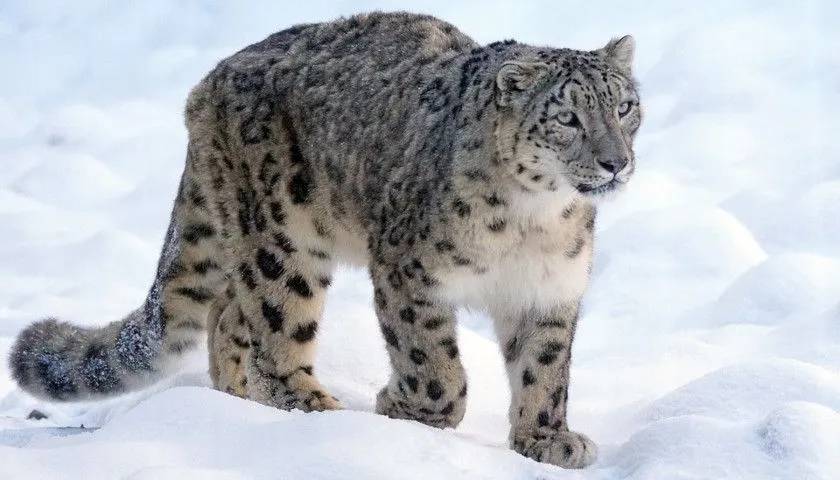
The Snow Leopard (Panthera uncia) is a majestic and elusive feline native to the mountain ranges of Central and South Asia, including the northern regions of India—specifically Himachal Pradesh, Uttarakhand, and Jammu and Kashmir. Recognizable by its thick, pale-gray fur with black rosettes and its long, bushy tail, the Snow Leopard is adapted to life in the cold, rugged environments at high altitudes.
As of the latest reports from the Snow Leopard Trust and the International Union for Conservation of Nature (IUCN), fewer than 10,000 Snow Leopards remain in the wild. These enigmatic predators face significant threats, including habitat loss due to encroachment and climate change, as well as human-wildlife conflict and poaching for their beautiful fur and bones. Their remote and often inaccessible habitat exacerbates their vulnerability to these threats. Conservation efforts for the Snow Leopard focus on protecting and managing their habitat through the establishment of protected areas and wildlife corridors. Anti-poaching measures and community-based conservation programs are crucial for reducing human-wildlife conflict and fostering coexistence with local communities. Additionally, research and monitoring initiatives help to better understand Snow Leopard behavior and ecology, supporting targeted conservation strategies. Ensuring the survival of the Snow Leopard is vital for maintaining the health of the high-altitude ecosystems it inhabits and preserving this iconic species for future generations.
6. Indian Rhino (Rhinoceros unicornis)
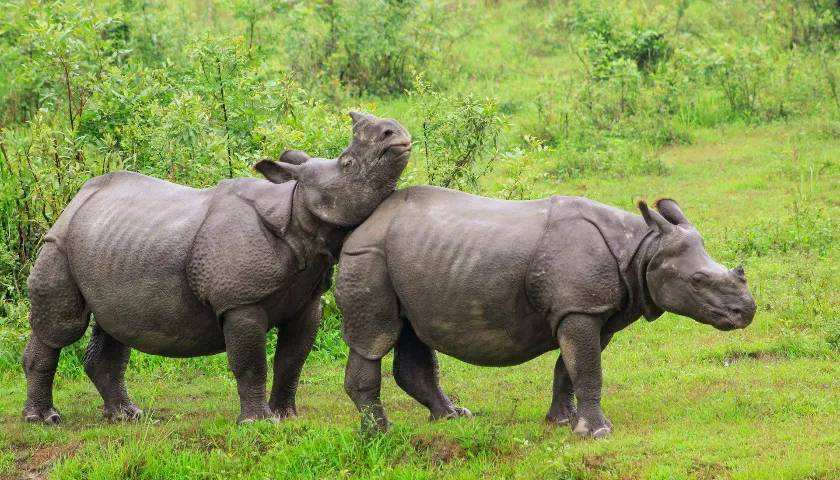
The Indian Rhino, also known as the Greater One-Horned Rhino (Rhinoceros unicornis), is a majestic mammal native to the grasslands and riverine forests of northeastern India. Recognizable by its distinctive single horn and thick, armor-like skin, the Indian Rhino is a formidable presence in its habitat. Historically, the species faced severe threats from poaching for its horn and habitat loss due to human encroachment and deforestation. However, dedicated conservation efforts have led to a significant recovery in its population.
As of the latest report from the International Rhino Foundation and the IUCN, there are approximately 3,000 Indian Rhinos remaining in the wild. These rhinos are primarily found in protected areas such as Kaziranga National Park and Manas National Park in Assam, and Jaldapara National Park and Gorumara National Park in West Bengal. The species is classified as vulnerable on the IUCN Red List, reflecting both the progress made and the ongoing challenges. In India, the Indian Rhino is protected under the Wildlife Protection Act of 1972, which prohibits hunting, poaching, and trade in rhinoceros parts. Despite these protections, poaching remains a serious threat due to the high demand for rhino horn on the black market, which is falsely believed to have medicinal properties and is considered a status symbol. Key conservation strategies include anti-poaching measures, habitat restoration, and community engagement. Establishing and maintaining wildlife corridors is crucial for connecting fragmented habitats and facilitating safe movement for these impressive rhinos. Continued support for conservation initiatives is essential to ensure the Indian Rhino’s survival and preserve the rich biodiversity of its ecosystem.
5. The Bengal Tiger (Panthera tigris tigris)
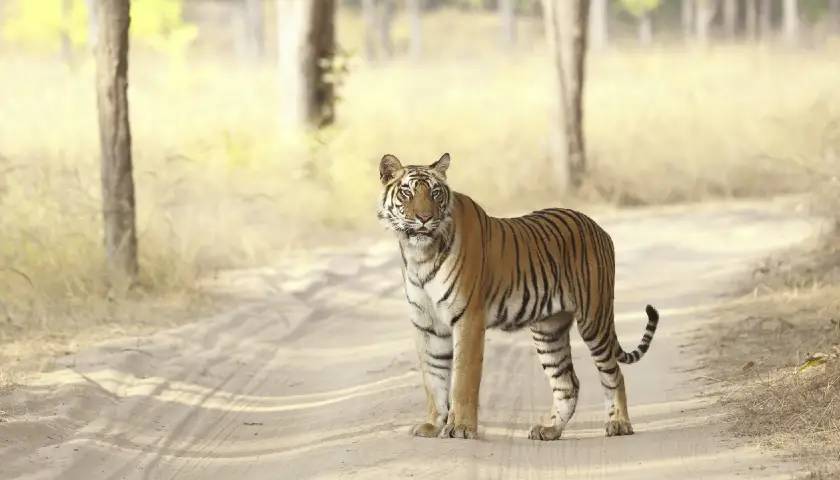
The Bengal Tiger (Panthera tigris tigris), native to the Indian subcontinent, is critically endangered and holds the status of national animal for both India and Bangladesh. As of 2023, there are approximately 5,575 Bengal Tigers globally, with around 2,885 residing in eight of India’s eighteen designated tiger states. The largest populations are found in Madhya Pradesh, Karnataka, and Maharashtra, with central Indian and Western Ghats regions hosting around 2,526 tigers, making them the most densely populated tiger habitats worldwide. Notable reserves such as Corbett National Park and Kaziranga National Park are also among the highest in tiger density.
Despite its legal protection under the Wildlife Protection Act of 1972, which prohibits hunting and trade, the Bengal Tiger remains critically endangered on the IUCN Red List. Ongoing threats include poaching for body parts and habitat loss due to agricultural expansion, urbanization, and infrastructure development. Conservation efforts are essential and focus on expanding and connecting tiger reserves, reducing human-tiger conflicts, and strengthening anti-poaching measures. These initiatives are vital to securing the future of the Bengal Tiger and maintaining its ecological significance.
4. The Indian Pangolin (Manis crassicaudata)
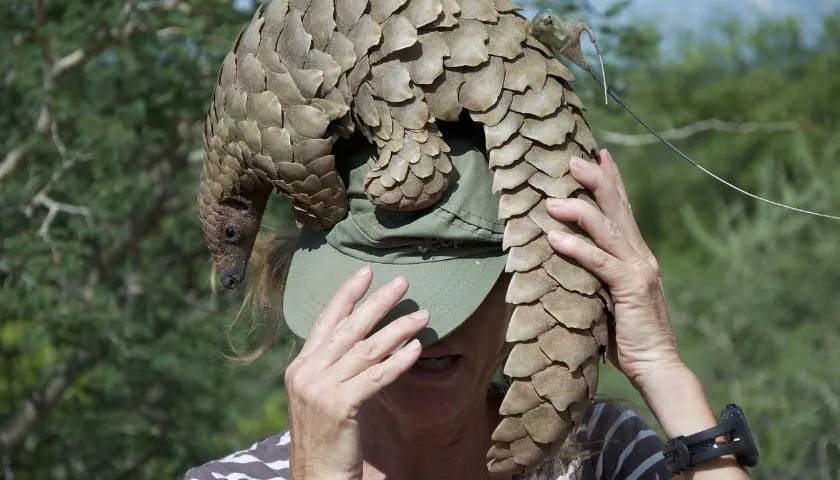
The Indian Pangolin (Manis crassicaudata) is a fascinating, scaly mammal native to the Indian subcontinent, including India, Sri Lanka, and parts of Bangladesh, Nepal, and Bhutan. Known for its protective keratin scales and elongated, prehensile tail, the Indian Pangolin is a nocturnal insectivore that primarily feeds on ants and termites. Its unique appearance and defensive behavior, such as curling into a tight ball when threatened, make it one of the most intriguing species in its habitat.
The Indian Pangolin is critically endangered due to severe threats from poaching and illegal wildlife trade, driven by high demand for its scales and meat. Habitat loss from deforestation and human encroachment has further exacerbated the species' decline. According to the latest IUCN Red List report published in 2022, fewer than 1,000 individuals remain in the wild, with population numbers continuing to decrease. The species is classified as critically endangered on the IUCN Red List. Conservation efforts focus on increasing protection through law enforcement and anti-poaching initiatives, habitat conservation and restoration, and educational campaigns to reduce demand for pangolin products. Captive breeding programs and rehabilitation centers are also vital for rebuilding population numbers. Protecting the Indian Pangolin is crucial for maintaining the ecological balance of its habitat and ensuring the survival of this unique and elusive species.
3. The Asiatic Lion (Panthera leo persica)
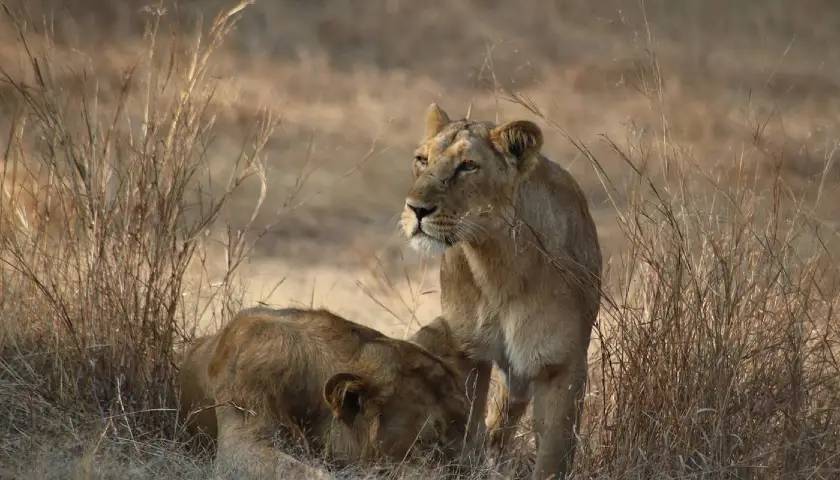
The Asiatic Lion (Panthera leo persica) is a unique and critically endangered subspecies of the lion, native to the Gir Forest in Gujarat, India. Distinguished from its African relatives by its smaller size, less developed mane, and distinctive fold of skin along its belly, the Asiatic Lion once roamed across the Middle East and India. Today, however, its range is restricted to a single population in the Gir Forest National Park and surrounding areas.
According to the latest estimates from the Wildlife Institute of India and the Asiatic Lion Conservation Project, published in their 2023 report, there are approximately 700 Asiatic Lions remaining in the wild. The species faces several threats, including habitat loss, human-wildlife conflict, and poaching. Historically, the Asiatic Lion was driven to the brink of extinction due to hunting and habitat destruction. Thanks to concerted conservation efforts, including habitat management, anti-poaching measures, and veterinary support, the population has seen a significant recovery. Conservation initiatives are focused on maintaining and expanding their habitat, ensuring genetic diversity through careful management, and mitigating conflicts with local communities. Establishing wildlife corridors and creating buffer zones around the Gir Forest are crucial steps in ensuring the long-term survival of the Asiatic Lion. Protecting this subspecies is essential for preserving its genetic legacy and maintaining the ecological balance of its forest habitat.
2. The Gharial (Gavialis gangeticus)
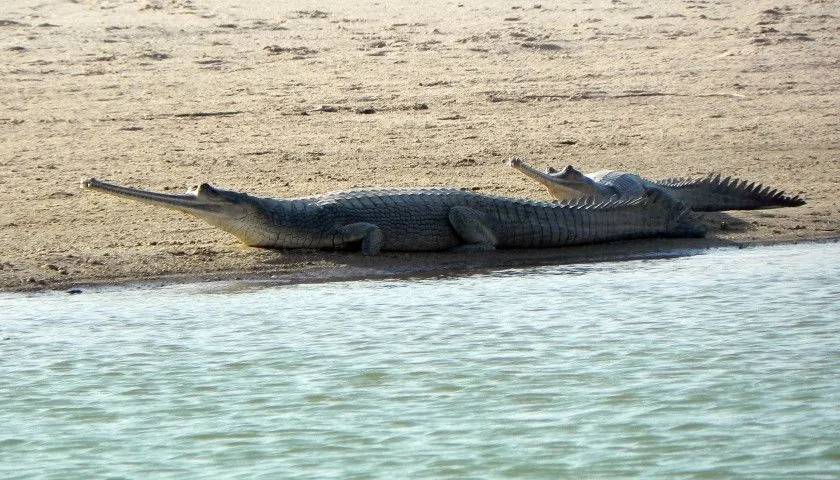
The Gharial (Gavialis gangeticus) is a distinctive crocodilian species native to the rivers of northern India, primarily the Ganges and its tributaries. Recognizable by its long, slender snout and sharp teeth, the Gharial is specialized for catching fish, which constitutes the majority of its diet. Its unique appearance, including a bulbous growth on the tip of the male's snout, distinguishes it from other crocodile species. Unfortunately, the Gharial faces severe threats due to habitat destruction, overfishing, and pollution. Riverine changes, such as dam construction and irrigation projects, have led to the loss of critical breeding and feeding grounds.
As of the latest reports from the Wildlife Institute of India and the IUCN, fewer than 250 Gharials remain in the wild, with their population continuing to be fragmented. The species is classified as critically endangered on the IUCN Red List. Conservation efforts are focused on habitat restoration, protecting breeding sites, and addressing threats from human activities. Captive breeding programs and reintroduction projects aim to boost population numbers and enhance genetic diversity. Community involvement in conservation initiatives and efforts to reduce river pollution are crucial for the Gharial's survival. Preserving this ancient species is essential not only for maintaining the ecological balance of river ecosystems but also for ensuring the continued presence of one of the world’s most unique crocodilian species.
1. The Great Indian Bustard (Ardeotis nigriceps)
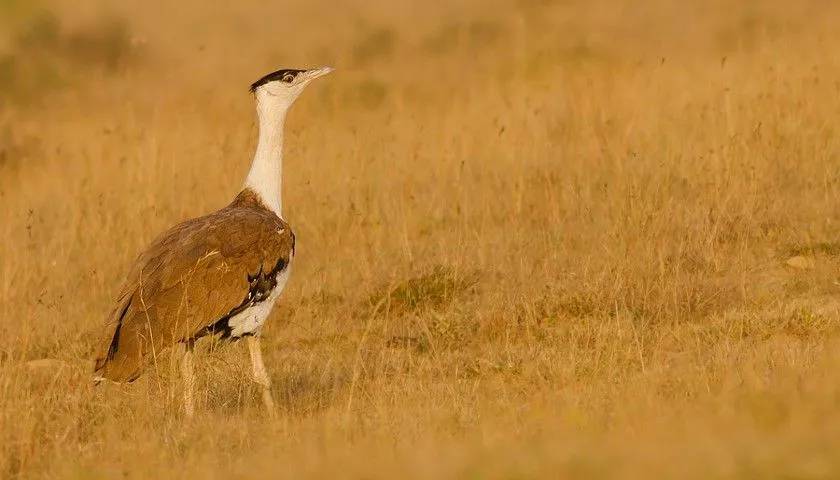
Image Source: the Creative Commons
The Indian Bustard (Ardeotis nigriceps) is one of India's most critically endangered bird species, with fewer than 150 individuals remaining in the wild, according to the latest report published by the Wildlife Institute of India (WII) in 2023. This large, ground-dwelling bird is primarily confined to small, fragmented populations across Rajasthan, Gujarat, Maharashtra, Karnataka, and Andhra Pradesh. Recognizable by its distinctive black crown, the Indian Bustard prefers arid and semi-arid grasslands, scrublands, and agricultural fields. However, it faces severe threats from habitat loss due to agricultural expansion, industrialization, and infrastructure development. Poaching and collisions with power lines have further exacerbated its decline.
Conservation efforts are underway to protect and restore the Indian Bustard population, including habitat protection, captive breeding programs, and awareness campaigns. Measures such as marking power lines and promoting underground cabling are being implemented to mitigate these threats. The Indian Bustard serves as a crucial indicator of grassland ecosystem health, and its protection is vital for maintaining biodiversity and ecological balance in these habitats.
Disclaimer: The list of "10 Most Endangered Wildlife Species in India" provided above is based on the current estimates of the number of individuals remaining in the wild. It underscores the urgent need to protect each species, as every individual animal is a crucial component of our planet's rich biodiversity. While some species may receive more attention in general conservation efforts, it is essential to remember that every species plays a unique role in its ecosystem and deserves our protection. At Alkof Holidays, we deeply value wildlife and recognize the importance of safeguarding all species, regardless of their visibility or the level of awareness they attract. Our list highlights those with the most critical conservation status, emphasizing the importance of concerted efforts to ensure their survival. We urge everyone to take action and support conservation initiatives, as every individual effort contributes to the preservation of our planet's diverse and precious wildlife.
While this list highlights 10 critically endangered species, it is important to recognize that many other animals are also in urgent need of protection. Due to the limitations of digital platforms, we cannot cover every endangered species here. However, our respect and admiration for all of nature's creations extend far beyond this list. Each species, no matter how small or less known, contributes to the intricate web of life on our planet. We appeal to everyone to extend their compassion and support to all endangered animals. Your awareness and actions can make a profound difference in preserving our planet’s biodiversity. Every effort counts in safeguarding the myriad forms of life that share our world, and together, we can ensure a future where all creatures thrive.






